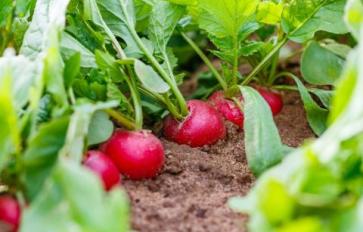
Getting picky eaters to eat their fruits and veggies without a fuss can be a challenge. Peas, broccoli -- basically anything green -- looks unappealing and unappetizing. If it doesn't come smothered in ketchup, then it's not edible. It can be difficult to get kids to eat healthy, and even more difficult to explain why they need to. But consider this: some kids have never picked an apple from a tree, plucked a tomato from the garden, and even worse, have no idea that the French fries they are eating are made from a root that grows in the ground. Teaching healthy eating habits starts with teaching where our food comes from. Engaging kids with the growing process of what they eat educates and encourages healthy eating. Try one or all three of these experiments to get kids to eat green.
Seed Germination Jar
Get kids to interact with the germinating process by watching a seed sprout in this fun experiment. As it takes a few days for the seed to show any sign of life, keep kids interested by creating a growing journal. Logging the progress of the seed and drawing a daily picture is an exciting endeavor. You can discuss what roots are, the necessary tools for seeds to sprout, and best of all, where good food comes from. Depending upon the seeds used, the growth time may vary. Beans or peas are ideal as they sprout quickly and are more readily available. Either way, this is a fun experiment that teaches kids the very essence of growing food!
Supplies:
- Glass jar
- Paper towels (or substitute cotton balls)
- Seeds
- Water
Directions:
Wet the paper towels and squeeze out any excess water. You want the towels good and damp, but not soaked. This will provide the necessary water for the seeds to begin sprouting. Next, scrunch the paper towels down into the jar. It is best to pack them in, filling up the jar to the top. Finally, take the seeds and place them halfway down the jar so they are visible in between the paper towel and glass. Check in on the seeds daily and watch for them to sprout.
Tooth-picked Avocado Pit
While growing avocados is a lengthy process, the avocado pit can teach kids an important lesson about the trials and tribulations of growing. It can take up to eight weeks for a pit to sprout, and a minimum of five years for the tree to bear fruit. Unlike other experiments that produce results within days, this experiment will teach patience and raise questions in the process of how food grows. Ask the kids if they can identify other fruits that have pits. Do these fruits grow on trees or bushes? Talk about orchards, farms, and what it takes for the grocery store to sell all that produce when it takes so long for one tree to bear fruit. You can take it a step further by planting the pit when it's established and watch it flourish into a tree. From pit to fruit, this experiment will raise appreciation for growing food.
Supplies:
- Avocado pit
- Water
- Glass jar
- 4 Toothpicks
Directions
After eating the delicious fruit of the avocado, rinse the pit and let it dry. Once dry, stick three evenly spaced toothpicks into the fatter portion of the pit. (While some may be more difficult to tell, pits are slightly bigger on the bottom than on the top.) Place the bottom of the pit on top of a glass jar, allowing the toothpicks to suspend it. Next, fill up the jar so about one inch of the pit is submersed in water. Place it in a windowsill and monitor the water level daily. If it dries out, then the pit will not grow. Look for the root and stem to begin to sprout. Growth may take anywhere from 2-8 weeks. Keep the water fresh, changing it out once every week.
Green Onion Scraps
Simple, easy, and cheap, this is a great way to teach kids about eliminating food waste. When buying your green onions at the grocery store, be sure to pick out a bundle that has a good amount of roots still attached to the bulb. This project requires only the scraps of the green onion, so be sure not to discard the ends. Talk about how the root absorbs water and stores food. Encourage kids to take a daily measurement of the green stem. The kids will be amazed how they can regenerate food from a portion of the scraps. It may even make them want to take a bite out of the green onion!
Supplies:
- Green onion scraps (bulb with root)
- Glass jar
- Water
Directions:
Place the green onions, root side down, in a glass. Fill it with enough water to cover the root and bottom half of the bulb. Place the jar in a well-lit windowsill. Change the water every few days and watch the bulbs regenerate! Within a week, you should have enough growth to eat some onion.








